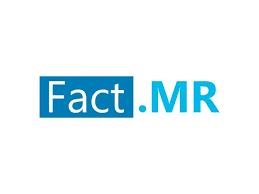Sustainable Solutions Propel Sodium Lignosulfonate Market to USD 535 Million by 2033

The global Sodium Lignosulfonate market is projected to grow from USD 377 million in 2023 to USD 535 million by 2033, achieving a steady CAGR of 3.5%. Driven by its eco-friendly properties and applications in construction, agriculture, and animal feed, this sustainable additive is gaining traction globally. This press release highlights key growth drivers, projections, and opportunities for stakeholders in this versatile market.
Why Is the Market Growing?
The Sodium Lignosulfonate market is expanding due to its role as a sustainable, water-soluble anionic polyelectrolyte derived from the pulp and paper industry. Its use as a plasticizer in concrete admixtures, valued for enhancing workability and reducing water content by 10–15%, drives demand in the construction sector, particularly in emerging economies like China and India. In agriculture, it serves as a dispersant in pesticides and fertilizers, improving efficacy and reducing environmental impact. The animal feed sector, holding a significant share, benefits from its low-toxicity binding properties, enhancing pellet quality and feed efficiency. Stringent environmental regulations, such as the U.S. EPA’s air quality standards, boost its use as a dust suppressant in mining and construction. Challenges like raw material price fluctuations, which rose by 7% in 2023, are being addressed through advancements in production efficiency and bio-based formulations.
What Are the Key Market Projections?
The market is expected to grow from USD 377 million in 2023 to USD 535 million by 2033, with a 3.5% CAGR, creating a USD 158 million opportunity. The concrete admixtures segment dominates, accounting for 35% of revenue in 2023, while animal feed binders and oil well additives contribute significantly. North America holds a substantial share, with the U.S. market driven by construction and dust control applications. Asia-Pacific, led by China, is forecast to grow at a 6.4% CAGR due to infrastructure development. The historical CAGR from 2018 to 2022 was 3.2%, reflecting steady growth despite COVID-19 disruptions. The dry segment is projected to reach USD 333.4 million by 2030, growing at a 3.9% CAGR.
How Can Stakeholders Leverage Opportunities?
Stakeholders in construction, agriculture, and animal feed sectors can capitalize on sodium lignosulfonate’s eco-friendly properties. Construction firms can use it as a cost-effective plasticizer to enhance concrete durability, meeting the global construction market’s projected growth to USD 15.5 trillion by 2030. Agricultural producers can leverage its dispersing capabilities to develop sustainable pesticides, particularly in Asia-Pacific’s expanding markets. Feed manufacturers benefit from its binding properties, with global meat production projected to reach 366 million tons by 2029, driving demand for feed additives. Innovations in modified lignosulfonates, like those with enhanced dispersibility, and expansions in emerging markets offer growth potential. Partnerships with pulp and paper industries ensure stable raw material supply, enhancing market competitiveness.
What Does the Report Cover?
Fact.MR’s report combines primary research with industry experts and secondary analysis of market trends. It covers market segments by product (dry, liquid, others), application (concrete admixtures, animal feed binders, oil well additives, dust control, others), and region (North America, Latin America, Europe, East Asia, South Asia & Oceania, Middle East & Africa). The report highlights trends like sustainability, bio-based additives, and technological advancements in production, providing actionable insights for stakeholders to navigate market opportunities.
Who Are the Market Leaders?
Key players include Borregaard, Rayonier Advanced Materials, Sappi Limited, Domsjo Fabriker, and Nippon Paper Industries Co., Ltd. In 2023, Borregaard enhanced its production of modified sodium lignosulfonate for concrete applications, improving dispersibility. Rayonier expanded its U.S. facilities to meet dust control demand. These companies, holding a significant market share, are investing in R&D for sustainable formulations and strategic expansions to strengthen their global presence.
What Are the Latest Market Developments?
In 2024, advancements in production technologies improved sodium lignosulfonate’s purity and dispersibility, expanding its use in high-performance concrete. The agriculture sector saw increased adoption in Asia-Pacific, with India’s pesticide market driving demand. Dust control applications grew in North America, supported by EPA regulations. Innovations in bio-based lignosulfonates, like those developed by Sappi, reduced environmental impact by 15%. The animal feed sector benefited from enhanced pellet binders, with global feed production rising in 2023, supporting market growth across diverse applications.
What Challenges and Solutions Exist?
Raw material price volatility, with wood pulp prices fluctuating by 7% in 2023, and competition from alternatives like polycarboxylate superplasticizers pose challenges. Environmental concerns about pulp and paper industry emissions also impact supply chains. Solutions include diversified sourcing, as pursued by Borregaard, and investments in enzymatic modification processes, reducing production costs by 10%. Sustainable production techniques and partnerships with biorefineries ensure compliance with regulations and enhance market resilience.
Conclusion
The Global Sodium Lignosulfonate Market is set to reach USD 535 million by 2033, driven by a 3.5% CAGR. With applications in construction, agriculture, and animal feed, and supported by sustainability trends, the market offers significant opportunities. Stakeholders can leverage Fact.MR’s insights to target high-growth regions like Asia-Pacific, invest in eco-friendly formulations, and address supply chain challenges to thrive in this sustainable market.
- Information Technology
- Office Equipment and Supplies
- Cars and Trucks
- Persons
- Books and Authors
- Tutorials
- Art
- Causes
- Crafts
- Dance
- Drinks
- Film
- Fitness
- Food
- Jeux
- Gardening
- Health
- Domicile
- Literature
- Music
- Networking
- Autre
- Party
- Religion
- Shopping
- Sports
- Theater
- Wellness



